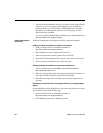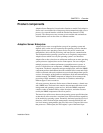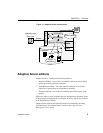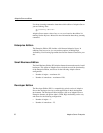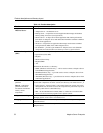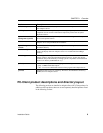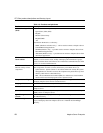
CHAPTER 1 Overview
Installation Guide 3
Product components
Adaptive Server Enterprise is based on the client/server model. Each Adaptive
Server user is associated with a client process that communicates with a server
process via a network interface called the Tabular Data Stream™ (TDS)
protocol. The client process may execute on one machine and communicate
with a database server on the same or a different machine.
Adaptive Server Enterprise
Adaptive Server runs as an application on top of an operating system and
depends solely on the services exported by the operating system to function.
Adaptive Server uses operating system services for process creation and
manipulation, device and file processing, and inter-process communication.
The hardware that the operating system runs on is completely transparent to
Adaptive Server which sees only the operating system’s user interfaces.
Adaptive Server has a virtual server architecture and has one or more operating
system processes (engines) that service client requests. You can configure
multiple processes to enhance performance on multiprocessor systems. A
process is divided into two components, a DBMS component and a kernel
component. The kernel component manages multiple tasks, while the DBMS
component performs the database functions on behalf of the current task. Each
client is associated with a task, and there are several tasks that perform specific
services; for example, writing buffers or audit data to disk, and communicating
with the network. The DBMS component of Adaptive Server manages the
processing of SQL statements, accesses data in a database, and manages
different types of server resources.
All server processes share two distinct areas of shared memory: a kernel area
and a DBMS area. The kernel area contains data structures that relate to task
management and operating system services, while the DBMS component
contains caches of database buffers, object descriptors, and other resources
used by the DBMS component of the server process.
The kernel layer of the server abstracts the operating system-specific functions
so that the rest of the server has a consistent view of those functions regardless
of the underlying operating system. Essentially, the kernel provides low-level
functions, such as task and engine management, network and disk I/O, and
low-level memory management to the rest of the server. The part of the server
that processes a TDS request (the TDS engine) is part of the kernel layer.




